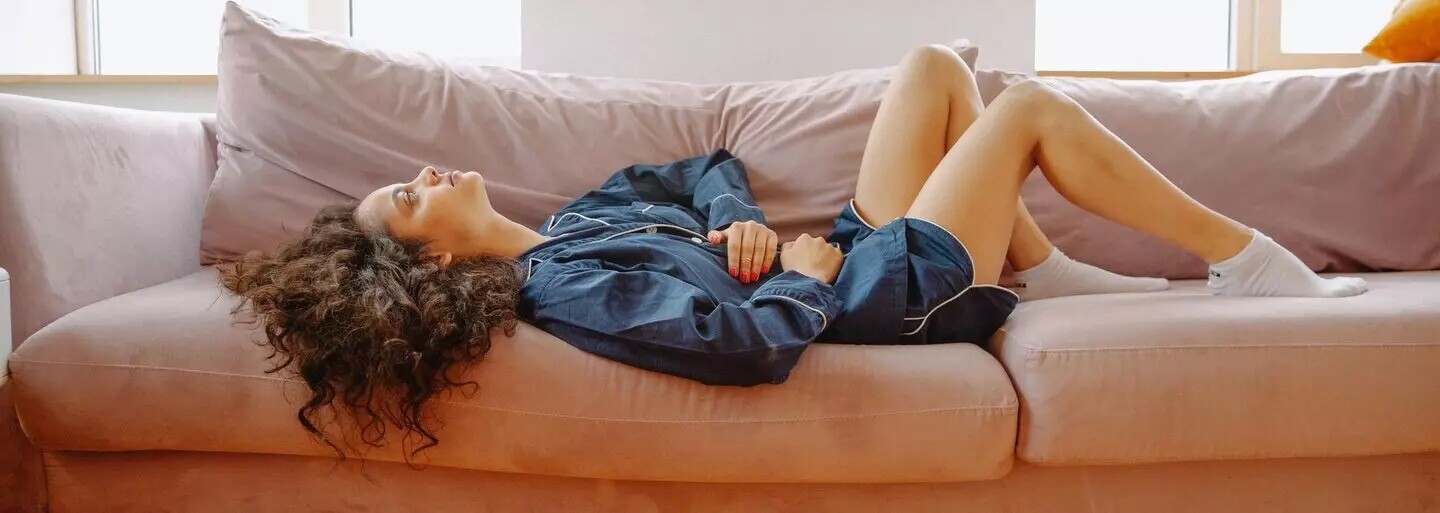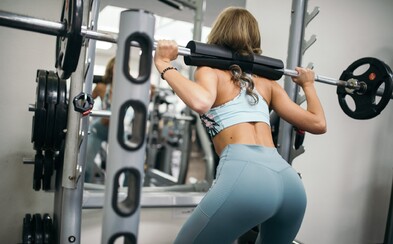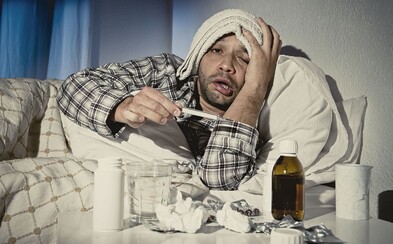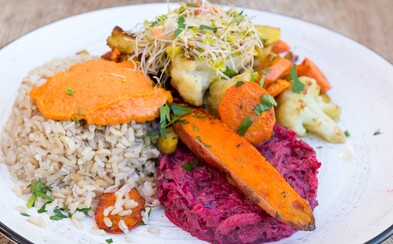 Ozempic can cause vision loss. A new study has shown a link between the drug and eye problems
Ozempic can cause vision loss. A new study has shown a link between the drug and eye problems
Ozempic can cause vision loss. A new study has shown a link between the drug and eye problems
Ozempic can cause vision loss. A new study has shown a link between the drug and eye problems
Herbs, Tinctures And Orgasms. We Have Tips For Alleviating Menstrual Pain
Do you experience pain and cramps during your period? Refresher has written tried and tested tips on how to handle them.
If problems persis, please contact administrator.

According to UNICEF statistics, 1.8 billion people around the world menstruate every month. Menstruation usually occurs every month, and its regularity is a sign that your cycle is within a healthy norm. But for many, this period of the month means discomfort and even paralysing pain and cramps. If this is also your case, this article is for you.
You have two ovaries and in each of them there are several (invisible to the naked eye) eggs. Thanks to hormones, they mature during the menstrual cycle and are ready for sperm fertilization. About halfway through your menstrual cycle, your hormones send a message to one of your ovaries to release this mature egg—a process called ovulation. You may not notice it - like most people - at all, but some may feel a slight pain in the lower abdomen. Once the egg leaves the ovary, it travels through one of the fallopian tubes towards the uterus. If pregnancy does not occur, the soft lining in the uterus that your body prepared for the egg will not be needed. Therefore, the mucous membrane breaks down and the blood flows out of the body together with the tissue.
Although the length of a period can be measured as a quantity—and most people menstruate for about two to seven days—menstrual pain is more complicated. However, according to the estimates of health experts, it could be said that up to 80% of all menstruating women will experience painful menstruation at least once during their reproductive years. And almost half still have to endure so-called premenstrual symptoms, such as bloating, a swollen belly, sore breasts, fatigue or mood swings.
However, for 5 to 10% of menstruating women, the pain is so strong that it disrupts their life. In such cases, however, it can also be endometriosis, a relatively common gynecological disease. Very intense pain can also be a symptom of the formation of cysts, so consult your gynecologist. It should also be noted that many women may not have menstruation at all due to health or other problems.
Why does my stomach hurt?
The cause of menstrual pain is prostaglandins, chemicals that cause muscle contractions in the uterus and help with the shedding of the endometrium. It is the secretion of excess endometrium, which we described above, that can cause pain and cramps, especially in the first days of menstruation. Prostaglandins also cause frequent diarrhea during menstruation, for which, for example, the name "period poop" has become established on the social network TikTok. As Healthline explains, if your body produces more prostaglandins than it needs, they enter the bloodstream and have a similar effect on other smooth muscles in the body, such as the intestines. So it follows that more prostaglandins equals more pain—and more stool.
However, a number of other factors can affect the degree and duration of menstrual pain, from stress, lifestyle, diet to - believe it or not - the season. It can be worse in winter, when the days are shorter and darker. “Sunshine helps us receive vitamin D and dopamine, which improve mood, pleasure, motivation and focus. Without it, the mood swings we experience during menstruation can be amplified and more difficult to cope with,” London Doctors Clinic director Preethi Daniel told the Standard Standard. In winter, we also spend more time at home, move less and eat more. This can also have an effect on (pre)menstrual pain. At the same time, according to Daniel, the cold weather also affects the length of the cycle. "Work published in 2011 found increased hormone secretion, more frequent ovulation and shorter cycles by 0.9 days in summer compared to winter," she added.
But back to the pain. We already know that the vast majority of menstruating women will experience it during their lifetime. But how to reduce it? Refresher brings you tips on how to deal with menstrual pain. We've divided the tips into natural "cures", over-the-counter products, quick relief and longer-term lifestyle changes.
Herbs against menstrual pain
One of the "super herbs" is St. John's Wort, which contains flavonoids that relieve cramps. Not only does St. John's wort alleviate the negative symptoms of menstruation, but it also has a positive effect on premenstrual syndrome and can adjust an irregular cycle. You should start drinking St. John's Wort tea a week before your period. You can make it simply, you pour the pulp from this herb in 200 milliliters of boiling water and let it steep for 10 to 15 minutes. You can drink it up to three times a day. You can either buy "pure" herbal powder, which you strain after infusing, or a straight herbal mixture in tea bags.
Another herb that can "turn the tide" of painful and irregular menstruation or heavy bleeding is Monk's Pepper. However, it is also beneficial to women suffering from endometriosis, before pregnancy and after childbirth in the postpartum period and during menopause. It will also help you get out of bad moods during PMS. In short, it seems to be a miracle of nature!
However, the decoction of the sedge has a brownish color, a strong aroma and is not very appealing in taste, which is why it is rather added to mixtures than drunk on its own. You can also buy it in capsules, for example. But if you believe in yourself, pour one teaspoon of the herb with a quarter liter of boiling water and let it infuse for 10 to 15 minutes. Then strain - and add at least a teaspoon of honey to make it drinkable. You can indulge in this decoction a maximum of three times a day, but always take a break for at least a week after the monthly treatment. Monk's Pepper should not be used by lactating women, women with gynecological-oncological diseases and breast cancer.
An ally in the fight against menstrual problems can for many women be even the common Lady's Mantle. This herb stimulates the production of progesterone, which is essential for regular menstruation. It thus supports ovulation and thus fertility. However, women have also used it for centuries to regulate excessive menstrual bleeding and, thanks to salicylic acid and quercetin, to relieve cramps and pain. This is because these compounds, which contrygel contains, are known for their analgesic and anti-inflammatory effects, explains the Indigo Herbs server. As with most herbs, you can buy kontryhel in the form of tea mixtures or straight from it. In this case, pour one to two teaspoons of approx. 250 milliliters of boiling water and let it infuse for 15 minutes. Then strain the infusion and drink it fresh, preferably once or twice a day.
Among other helpers for menstrual cramps, herbalists include, for example, chamomile, marigold, calendula or lemon balm. Something suits everyone differently, but always consult someone who understands them before herbal parties. In case of inappropriate handling and consumption, they could cause more harm than good.
Over-the-counter products for menstrual pain relief
There is an abundance of over-the-counter remedies for menstrual pain relief on the market, and you can even buy some of them elsewhere than at the pharmacy. Some, of course, cost quite a lot of money - but they often do not bring the desired effect, i.e. pain relief. Refresher brings you tips on products that have good reviews and can be purchased without a prescription. Even here, however, it is true that not all preparations can help everyone.
The first of them is evening primrose oil, which is obtained by pressing the seeds of two-year-old evening primrose. It is a source rich in gamma linolenic acids, which in the body affect the production of inflammatory prostaglandins released during menstruation. They can thus bring you relief from menstrual cramps, bloating, headaches and breast tenderness.
From the available literature, it almost seems as if evening primrose oil is a complete miracle. It not only relieves menstrual cramps, but also supports the activity of the cardiovascular system, helps maintain normal blood cholesterol levels, cleans the blood - and even helps fight acne and skin rashes. As a bonus, it increases sexual libido for some women and can be used even after a rough night, to help with the hangover. The recommended daily dose of evening primrose oil is three teaspoons, but for a healthy person, one teaspoon is often enough for beneficial effects.
When you think of "menstrual pain relief," many people think of magnesium. No wonder, magnesium works wonders against cramps - and not just menstrual ones. The effectiveness of magnesium has been proven in a number of professional works. It works by relaxing the smooth muscles of the uterus and reducing the amount of the already mentioned, "fallen" prostaglandins.
For example, a 2017 study highlights a positive correlation between magnesium intake and relief from premenstrual syndrome, dysmenorrhea (very painful menstruation), postmenopausal symptoms, and possibly even migraines. However, it must be emphasized that taking magnesium daily prevents menstrual cramps - if you only take it when you are writhing in pain, it probably won't help you much. If you don't use it every day, it can be a suitable addition to, for example, some painkillers during menstruation. You can buy magnesium in capsules and in the form of effervescent tablets, so in addition to the active substance, you also get a sweet drink with a pleasant taste - from grapefruit, lemon to, for example, apple.
Among other freely available and popular products for alleviating menstrual pains is certainly the well-known hot water bottle or heating pads. You can buy them in all shapes and colors, some are even sold in the shape of a pillow or a soft toy.
Heat, sport and orgasm = quick relief
There may be days when one does not have any of the above at home, not even pink ibalgin pills. But menstrual pain can be relentless and unbearable. How to relieve yourself quickly and easily with options that are probably available to most of us?
The first tip that gives many menstruating women quick relief is heat. If you don't have a thermos or a heating bottle at home, jump into the shower or bath full of hot water. This is because the heat circulates the pelvic area, which helps to relax the muscles that cause the cramps. Be careful, however, that the water is just hot enough so that you don't get dizzy. Especially with the fact that some women enjoy a glass of red wine with this hot "menstrual" bath. It is also possible that a hot bath or shower will only help you for a short time, so it is not a bad idea to think about buying a hot water bottle.
It might surprise you—and it might be the last thing on your mind during menstrual cramps—but exercise can also bring relief. "Both progesterone and estrogen are at their lowest levels throughout the menstrual phase of the cycle, which can make people feel tired and less energetic," Dr. Christopher Holligsworth told Healthline. But if exercise or sports in general are part of your daily routine, you don't have to skip it even during menstruation. Exercise provides us with a natural endorphin stimulus, which can improve a person's mood and help with menstrual cramps. But we don't mean some extremely intense strength workout. Light cardio, yoga, pilates are more suitable - but also a simple walk. It's important to listen to your body and not push it somewhere it doesn't want to go.
From a certain point of view, sex or masturbation could certainly be considered a "exercise activity". All kidding aside, having an orgasm can really help with period pain. During climax, blood rushes into the uterus, which helps relieve cramps. It will certainly relieve you of stress and help you relax better thanks to the released endorphins. At the same time, during orgasm, chemicals such as oxytocin and dopamine are released in the human body, which act as pain relievers. What's more, some women report that their period orgasms are more intense and last longer!
Less sugar, less nicotine and less fatty foods means increased menstrual comfort, say scientists
The tips described above can be put into practice almost immediately - for example, you go to the pharmacy for magnesium tablets, buy herbs in a specialized store or buy a hot water bottle. However, research has also shown that menstrual pain can be alleviated by lifestyle changes. This is no longer so easy and fast - but not impossible either. For example, a 2016 study of 250 female college students concluded that there are indeed links between the intensity of menstrual cramps and appropriate nutrition, regular physical activity, self-care, high levels of social relationships, and reduced stress levels.
Dysmenorrhea (very strong menstrual pain) was more likely to be suffered by women with a higher BMI without significant sports habits and women who experienced a higher level of stress and anxiety. The role of arachidonic acid (contained in animal fats, especially meat and dairy products) in the synthesis of prostaglandins has also been repeatedly confirmed.
It may seem like a major lifestyle change, but you don't have to ditch everything at once.
Experiment, give yourself enough time and try what works for your body. It is possible that none of our tips will relieve your period pain, which does not automatically mean that there is something wrong with you. Just as every body is different, so are periods. However, if the pain is taking you out of your normal life and nothing is working on it, don't hesitate to seek out a specialist. Menstruation is nothing to be ashamed of.
If problems persis, please contact administrator.
















